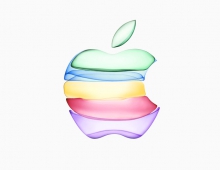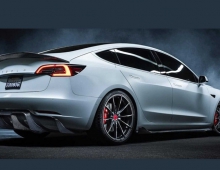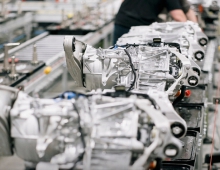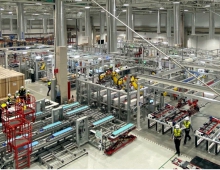
Tesla Patents Augmented Reality System for Manufacturing
Tesla has applied a patent for an augmented reality application built to make the work of factory workers easier.
The filling with the WIPO is dated 31.05.2018, and was published online late last week. It describes a system that overlays data corresponding to features of an object of interest in AR glasses that could be used as safety glasses by workers:
“An augmented reality (AR) application for manufacturing is disclosed. In some embodiments, computer vision and augmented reality techniques are utilized to identify an object of interest and the relationship between a user and the object. For example, a user has an AR device such as a smartphone that includes a camera and sensors or a pair of AR smart glasses. In some embodiments, the AR glasses may be in the form of safety glasses. The AR device captures a live view of an object of interest, for example, a view of one or more automotive parts. The AR device determines the location of the device as well as the location and type of the object of interest. For example, the AR device identifies that the object of interest is a right hand front shock tower of a vehicle. The AR device then overlays data corresponding to features of the object of interest, such as mechanical joints, interfaces with other parts, thickness of e-coating, etc. on top of the view of the object of interest. Examples of the joint features include spot welds, self-pierced rivets, laser welds, structural adhesive, and sealers, among others. As the user moves around the object, the view of the object from the perspective of the AR device and the overlaid data of the detected features adjust accordingly. The user can also interact with the AR device. For example, a user can display information on each of the identified features. In some embodiments, for example, the AR device displays the tolerances associated with each detected feature, such as the location of a spot weld or hole. As another example, the overlaid data on the view of the object includes details for assembly, such as the order to perform laser welds, the type of weld to perform, the tolerance associated with each feature, whether a feature is assembled correctly, etc. In various embodiments, the AR device detects features of a physical object and displays digital information interactively to the user. The data associated with the object of interest is presented to help the user more efficiently perform a manufacturing task.”
According to the patent application, Tesla seems to plan to use computer vision technology to analyze what the worker sees, like the thickness of the coating of a part for example, and help them make decisions about quality control.





















